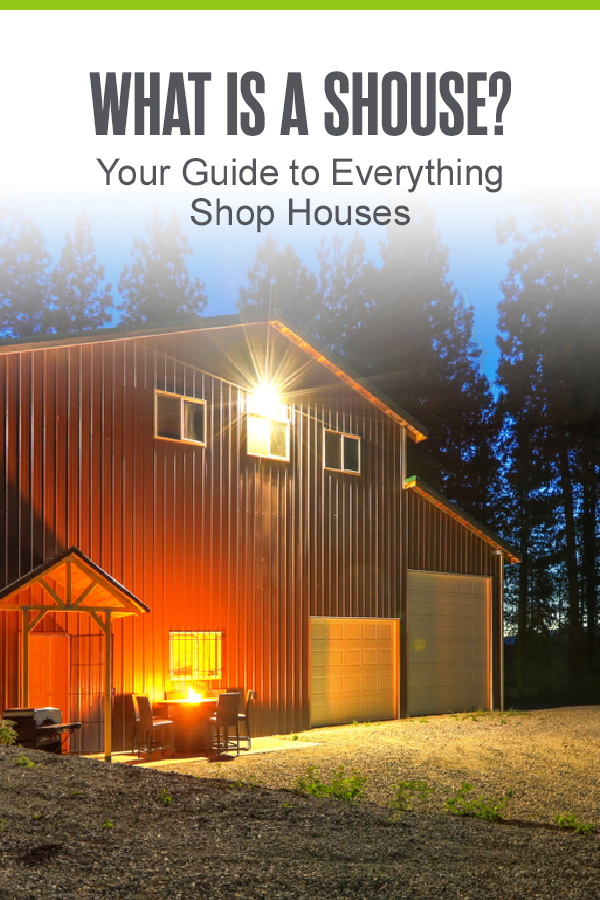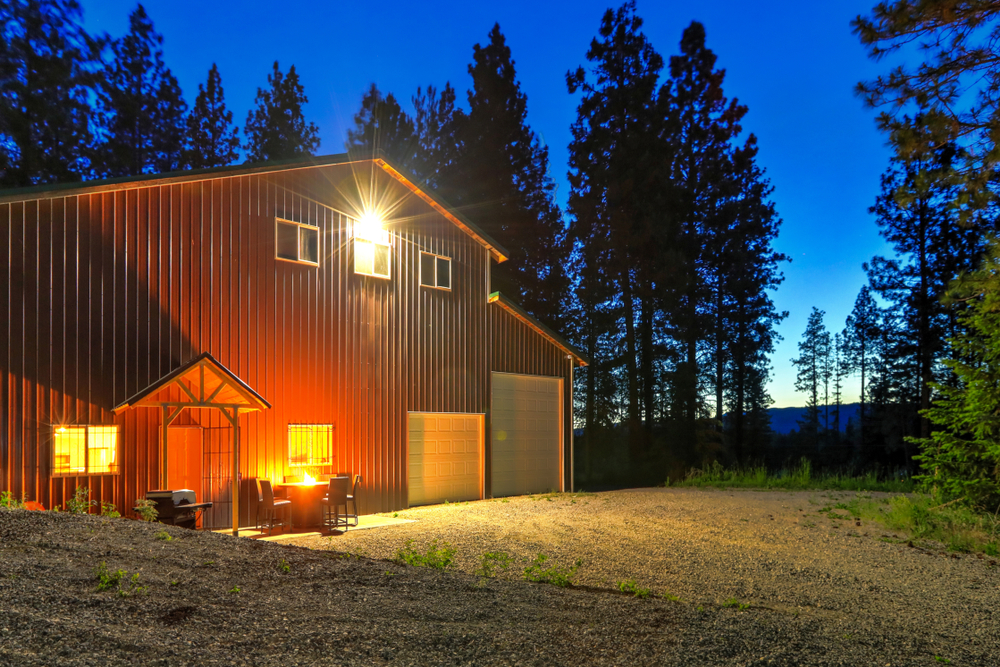Wondering if you should build a shouse? Shop houses are becoming a great alternative housing option for those looking to have a workshop area attached to their home! From low building costs to eliminating commutes, here is everything you need to know about shop homes.
- What Is a Shouse?
- Shouse or Barndominium?
- How Much Does It Cost to Build a Shouse?
- Pros of a Shouse
- Cons of a Shouse
- How to Build a Shouse
What Is a Shouse?
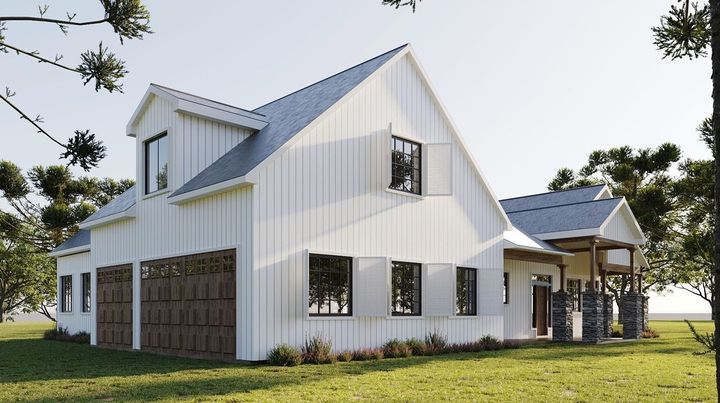
Photo via @back_forty_buildings
A shouse—also referred to as a “shop house” or “shome”—is an abode constructed with metal or wood pole frames that connects to a large workspace. Many shomes are open-concept, with high ceilings, large windows, and often oversized garage doors. Shop houses are a great housing style for welders, mechanics, construction workers, or hobbyists wanting a large workspace close to home.
Shouse or Barndominium?
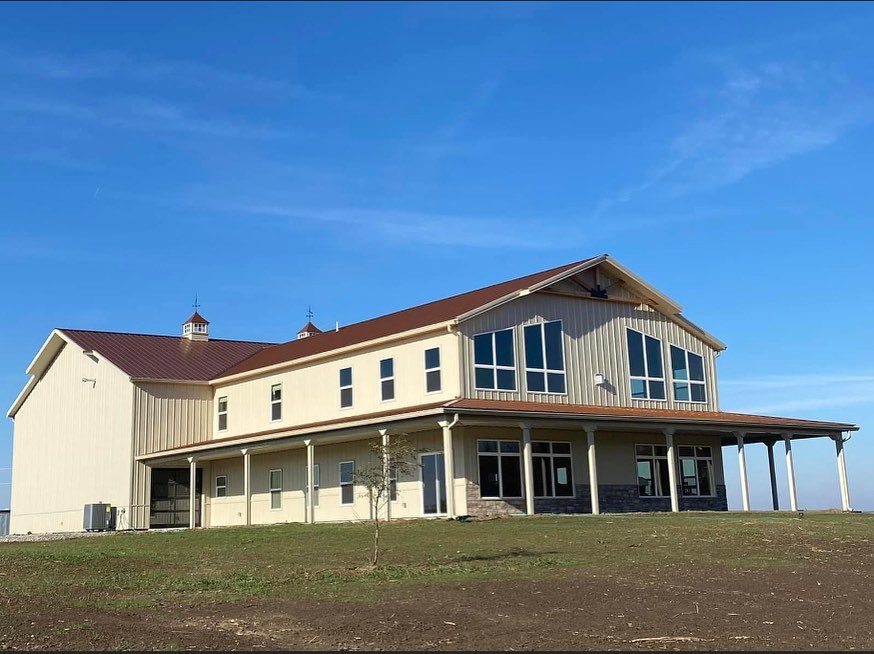
Photo via @greinerbuildings
Before you start building your shop house, it’s important to understand the difference between a shouse and the more well-known barndominium. Though similar in appearance, both residence types have a different construction and purpose that can influence which housing type is best for you.
Structure & Building Material
Though both typically utilize metal siding, a shop house (also known as a pole barn home) is constructed mostly out of metal with a pole frame, while a barndominium incorporates far more wood. And as the name suggests, barndominium exteriors are usually built to resemble a traditional barn, whereas a shouse looks more like a work shed with tall garage doors.
Usability
Shouse owners tend to prioritize the workshop area as a significant feature in their home’s floor plan. While barndos can certainly have shouse elements if a workshop is added, most barndominiums place an emphasis on residential amenities inside a barn-style, open-concept living space.
How Much Does It Cost to Build a Shouse?
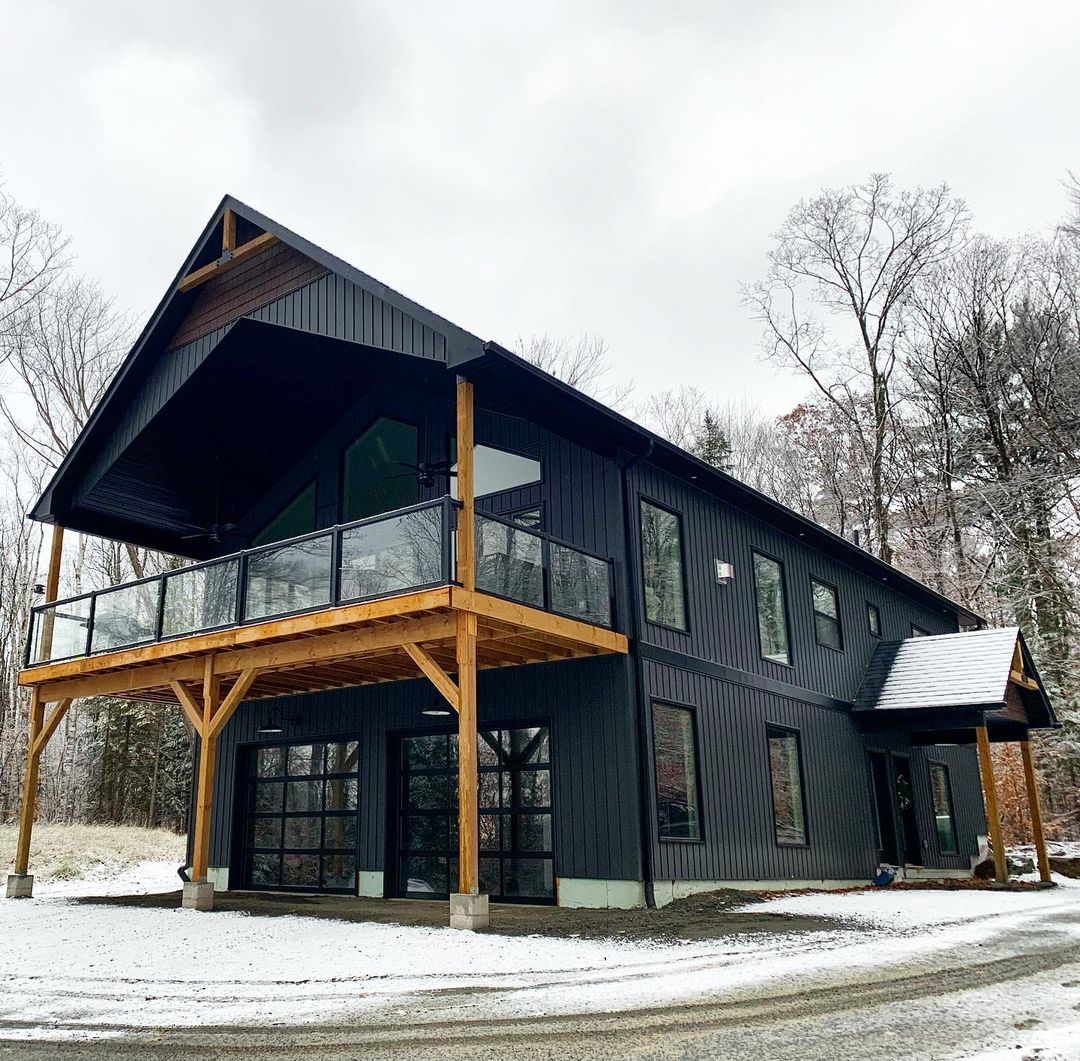
Photo via @brunelbuild
Though costs vary depending on which materials you opt for, an average shouse costs about $50-$120 per square foot, whereas a traditional home build averages between $100-$155 per square foot. Costs also vary depending on land prices, whether you purchase a prefab kit, which finishings you choose for your living and workshop area, and the percentage of the construction work you do yourself vs. how much you contract out.
Exterior Shouse Costs
The biggest cost of building a shop house comes from the purchase of materials needed to build your shome’s exterior, including the roof, doors, and more. These materials include:
- Metal siding
- Concrete foundation
- Oversized or customized garage doors
- Windows
Interior Shouse Costs
As with any custom home, the more features and amenities you decide to include in your shop house, the more the costs will increase. Interior costs for your shome include:
- Code-approved workshop & home ventilation
- Countertops & shelving
- Appliances
- Flooring
- Electricity
- Plumbing
Pros of a Shouse
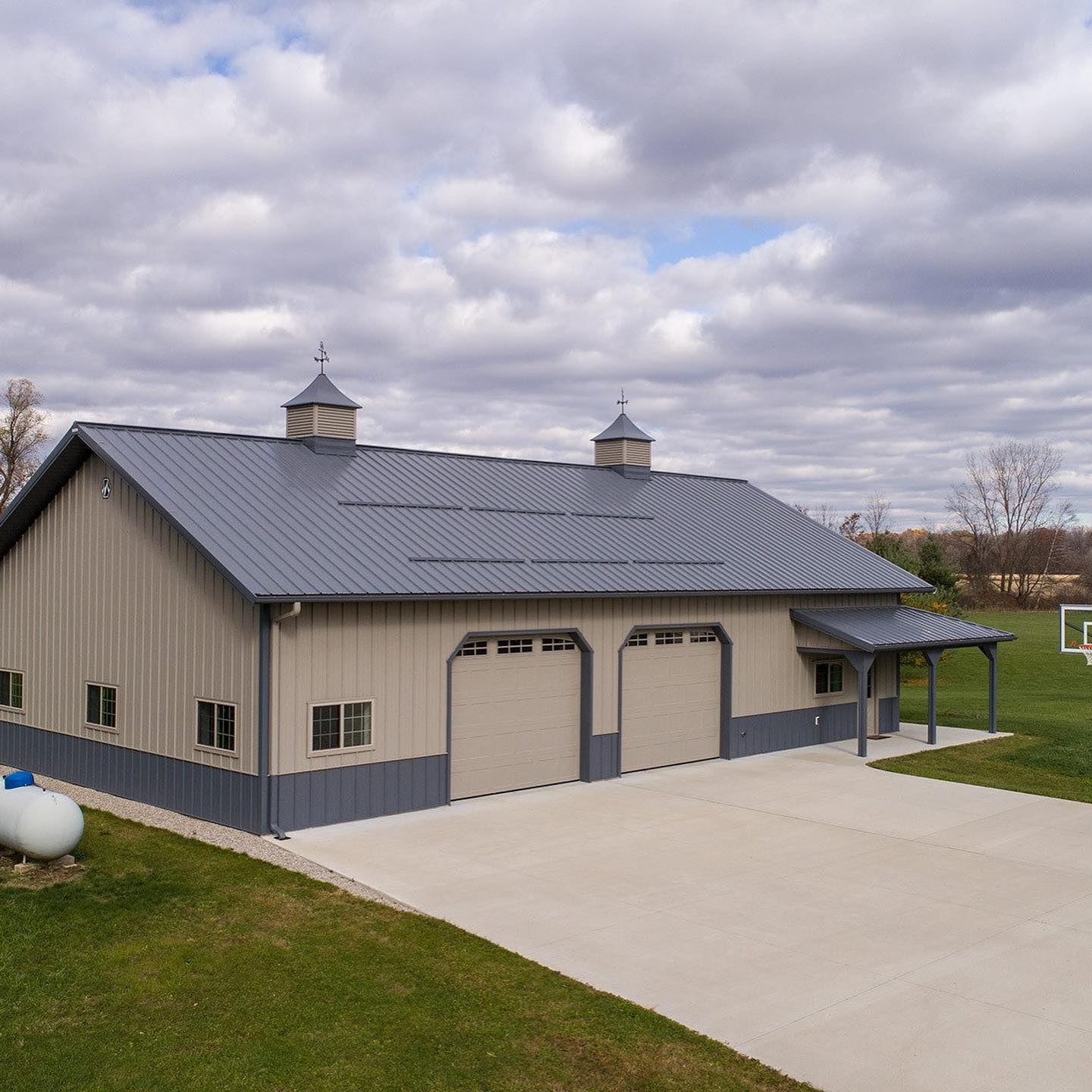
Photo via @mortonbuildings
Whether you’re a hobbyist or business owner wanting an at-home workspace, a shouse is a great option for you! From their fast build times to their durability, here are several great advantages to living in a shouse.
Custom Workshop
One of the best things about building a shouse is getting to have your dream workshop. Completely customizable, you can decide on a floor plan with the finishing touches, storage options, amenities, and features that work best for you and your work.
No Commute
Having a workshop as part of your home means you’ll have a short commute, especially if you plan to use the shop area for business purposes. No need to wake up early to scrape your windshield in the winter, rush through traffic, burn yourself on your seatbelt, or let your gas tank break the bank since work is a few steps away!
Low Cost
Similar to a barndo, one of the biggest pros of building a shouse is the low building cost compared to that of a traditional home. However, there are plenty of other reasons a shouse can save you money. For one, since the lack of a basement means you’ll have fewer square feet, you may have lower property taxes. Also, the extra costs you incur from renting a workshop space and owning or renting a traditional home are mitigated with a shop house, which combines the two functions for a smaller lump cost.
Storage Space
While traditional workshops may be too small to store all of your materials—and may overflow into your living area—a shouse has plenty of storage space to keep everything within its own zone. And thanks to the high ceilings, you can even store large items like work vehicles, RVs, cars, boats, and bulky equipment with hanging storage, car lifts, and more!
Durability
Shop homes offer great durability and increased structural integrity, which makes your home less likely to suffer damages from severe weather. Whereas traditional homes are more prone to water damage and mold growth due to the wood stud frame, the metal structure of a shouse prevents many moisture-related problems.
Fast Build Times
Shomes are often faster to build than traditional homes due to their simple layouts, and can be constructed efficiently using pre-designed floor plans and prefab kits. With an open layout, there are fewer opportunities for costly construction errors that may delay a traditional building process.
Cons of a Shouse
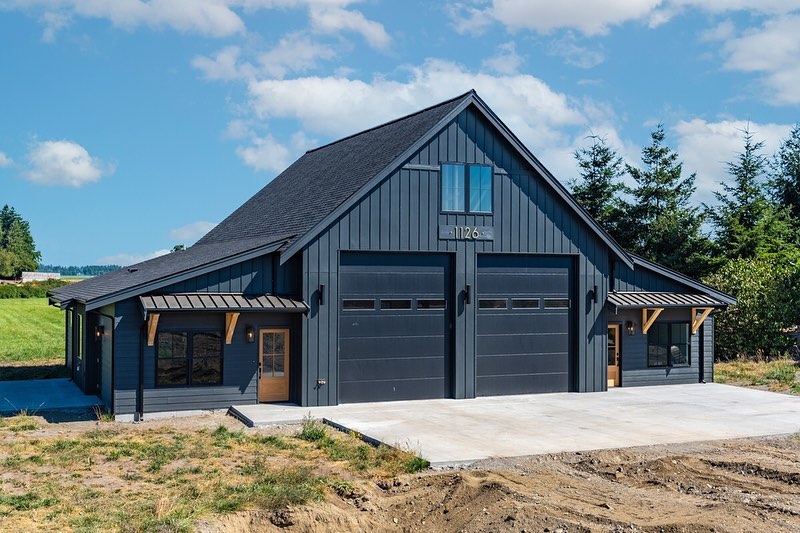
Photo via @adhouseplans
Just like with any other home, living in a shouse comes with some disadvantages. Before you make the decision to build a shop house, here are some possible drawbacks to consider.
Limited Locations
When building your shouse, it’s important to take city building codes into consideration. Most cities and neighborhood associations won’t allow you to construct a shop house within city limits, meaning you may have to build in rural areas. While the rural location may even be a pro for some, you’ll need to consider your distance from city amenities and utilities like water, waste management, and gas, which could impact your shouse’s cost.
Lender Availability
Because a shouse is a newer housing concept, it may be difficult to get approved for a loan. In order to receive the construction loan, you’ll have to show your lender a detailed building plan. You may have better luck applying for a loan from a Farm Credit Bureau than you would from a traditional lender.
Noise Level
Because your home is attached to a workshop, it can get a little loud at times. Depending on the noise level of your type of work, you may have to be mindful of others living in the house. In addition, since shouses have a metal or steel exterior, outside noises like wind or rain may be more pronounced inside.
Balancing Shop & Home Space
As a resident of this housing type, it’s important you get enough of what you need. When deciding on your shop house floor plan, evaluate if you’ll need a small or large workshop. Its size will affect the layout and amount of living space in your shome, which can be difficult for people designing a shouse.
How to Build a Shouse
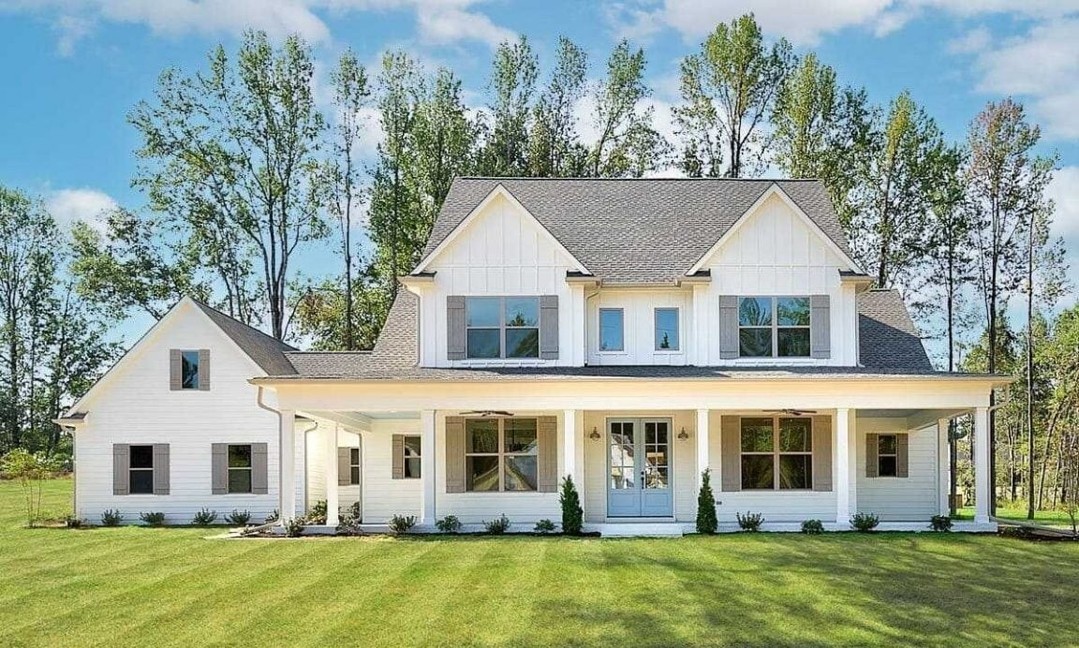
Photo via @metal.building.homes
Ready to start constructing your new shouse? Whether you choose the prefab kit route or hire a contractor for a custom design, get started building your shouse with these four key steps!
Buy Land
Before you start looking at shouse designs, it’s important to find land where you can build your shop house. This means making sure the piece of land you want to buy is big enough for your new home and any work, recreational activities, home parties, and more! Consider your home’s distance from different things like grocery stores, doctor’s offices, or schools since you’ll be in a rural area.
Find the Right Builder
After purchasing the land, it’s time to choose the builder you want. To find the best builder, conduct research while considering builder experience, quality, and expertise illustrated in their portfolio. When interviewing contractors, know your budget and what features you need and want so you can make the best choice for yourself.
Choose a Floor Plan
Whether you’re hiring a builder or going the DIY route, it’s essential to choose a floor plan for your shouse that works with your lifestyle. To help with this process, consider going with a pre-designed floor plan. While these floor plans may not always match your vision, they may give you more room in your budget to customize other amenities and features in your shouse.
Decide on an Interior Home Style
As you complete the building process, you’ll want to start planning your home decorating style. Looking to stay with the barn-themed interior? Go for a farmhouse or cottagecore style. Or if you like a functional design with sharp lines and a muted palette, opt for a modern style. The important thing is to pick a style that will make your new shop house truly feel like home.
***
Need to store belongings and tools while building your shop house? Extra Space Storage has storage facilities located throughout the U.S. that can help. Find storage units near you!
